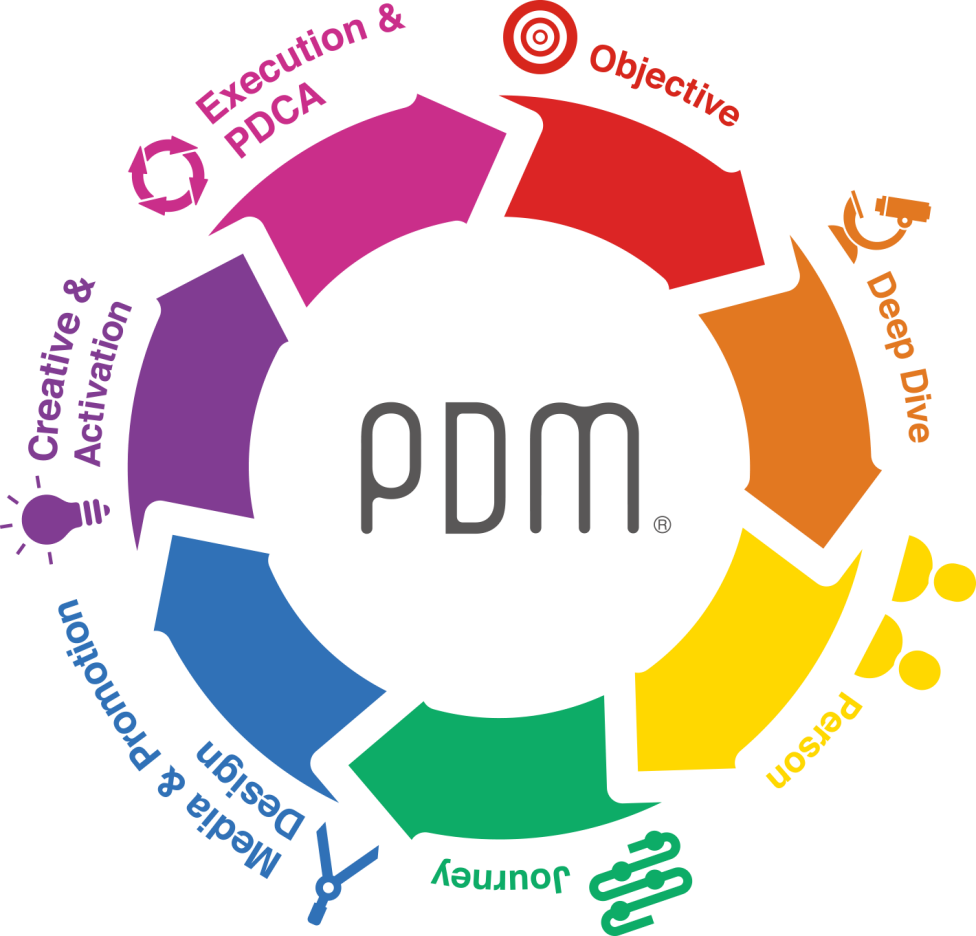What's troubling Ms. A, who works at a sporting goods store? (Illustration: Saki Kanai)
This series introduces the concept of People-Driven Marketing (PDM). This installment's theme is Objective (Goal Setting).
While collaboration between marketing sections is crucial, in reality, departments often set and pursue separate goals independently. This column discusses the essential digital-age approach where each section shares "people-centric" goal setting to maximize marketing effectiveness. The keyword is "cross-boundary collaboration."
<Table of Contents>
~Ako's Story: Objective Edition~
In the suburbs of a certain town stands the large sporting goods store "Sports People." Ako, an employee in her sixth year, has been assigned to support the store manager in all aspects starting this month. She's heard from the manager that sales have been declining recently.
"What should I focus on first to boost sales?"
Ako observed her fellow employees.
1. Senior B, in charge of mass advertising → Immersed in creating commercials beloved locally.
2. Ms. C, in charge of flyers → She struggles daily to create flyers that generate strong responses.
3. D, in charge of the website → Seems to be constantly improving the site and experimenting with web ads to boost sales on the "Sports People Online" e-commerce site.
4. Senior Product Manager E → Seems torn between what new products to stock and whether generating buzz or boosting sales is more important.
5. Sales floor manager F → Seems to be thinking about new initiatives not just to sell products, but to create experiences.
But there doesn't seem to be much of an atmosphere where each person actively collaborates with the others.
Wait? Everyone's working separately toward the same goal of boosting sales! A-ko realized something was seriously wrong...
Aren't you setting goals "by department"?
I'm Ishitani from Dentsu Inc. As someone who consults on business, marketing, and communication strategies in digital environments and assists with integrated planning, I'll discuss goal setting from a PDM perspective.
So, what kind of work do you typically handle?
If you're a Web Dentsu Inc. News reader who reacted to this article's title, you're likely working in a company's business division, marketing division, or advertising division, or perhaps you're someone with diverse expertise at an advertising agency or digital-related company.
I often hear such concerns as work-related frustrations.
Why do "disconnect incidents" like those in Ako's workplace occur, even when teams should be working toward the same goals?
Increasingly specialized roles within departments can certainly lead to communication gaps. However, fundamentally, the root cause is often the lack of "clear definition and cross-departmental sharing of Key Goal Indicators (KGIs) and Key Performance Indicators (KPIs)." Why isn't this sharing happening effectively? Because goals are often set from the "department's perspective" rather than the "customer's perspective."
Today, the 4Ps of marketing are digitally interconnected
In the past, marketing functioned relatively efficiently with departmental specialization within companies, so setting goals solely at the departmental level was often sufficient.
However, today the activities of the marketing 4Ps (Product, Price, Place, Promotion) are becoming increasingly interconnected within the digital environment. Please see the diagram below.
These phenomena should not be considered independently. They are deeply interconnected and must be addressed simultaneously.
Now that digitalization has connected the 4Ps, it is crucial to set "common KGI/KPI across all departments from the customer's perspective," taking environmental changes into account. Sharing the same metrics across all departments can serve as a vital guideline for integrating marketing communication strategies, such as service development, channel design, and communication initiatives.
When setting common KGIs and KPIs, analyze both "attitude-based" metrics (derived from surveys) and "behavior-based" metrics (quantified by actual numbers like sales volume, store visits, or web traffic) from the perspective of "customer awareness and actions." Then, select the metrics most critical for driving sales growth and business expansion.
-
Attitude-based metrics: Interest, intent, brand recall, etc., regarding one's own and competitor brands, obtainable through surveys, etc.
-
Action-based metrics: Sales data, website log data, SNS data, member data, etc., obtainable as actual figures
After selecting key metrics, we work backward from the target sales or profit figures (KGI) to determine the target values for KPIs as intermediate metrics. The key point here is to establish a system that manages awareness-based and action-based metrics in an integrated manner.
The concept is illustrated in the following diagram.
We will omit details on analyzing awareness and behavioral metrics for setting KGI/KPI for individual projects, selecting key metrics, and setting target scores for this time. If you're interested, please feel free to consult Dentsu Inc.
Let's cross boundaries to achieve shared KGI and KPI goals!
Traditionally, the core work of advertising agencies centered on "using advertising communication as a marketing tool to change customer perceptions and contribute to achieving the company's sales targets."
Today, this has evolved into work that "integrates and combines various marketing methods, not just advertising communication, to solve problems with the goal of achieving sustainable business growth for the company."
Dentsu Inc.'s People Driven Marketing (PDM) is cutting-edge collective wisdom, distilled from insights gained through thousands of Dentsu Inc. projects, designed to evolve marketing communication strategies within the digital environment.
As the four Ps of marketing converge, the number of points to consider increases, and confusion often arises. In such moments, the PDM framework can serve as your guide.
Future marketing communications demand not only the strength and uniqueness of individual initiatives, but also the ability to leverage synergies by understanding their interrelationships. This requires flexibly transcending departmental and role boundaries to collaborate toward shared goals.
While each department and individual recognizes their role, sharing Key Goal Indicators (KGIs) and Key Performance Indicators (KPIs) enables bolder cross-boundary collaboration. Would you like to advance this kind of work together?
~Ako's Story: Objective Edition~
Ako gathered the awareness metric data and behavioral metric data held by each responsible party and analyzed it using statistical methods she had excelled at since her student days.
・What psychological and behavioral indicators truly contribute to sales?
・Which indicators are bottlenecks?
・Amidst digital environment changes, which indicators should we focus on growing?
As a result, the following KGI and KPI were established.
【KGI】
Increase annual sales by 10% within one year
【KPIs to Achieve KGI】
1. First, gain "favorability" among the target market and increase actual "store visits."
2. Increase the number of customers who register for the free web membership service "my Sports People" on the Sports People website and make repeat purchases twice within six months.
By sharing these KGI and KPI targets, the product team, advertising team, web team, and sales floor team gained clear purpose in their work.
Furthermore, to increase "store visits," the product and web teams collaborated; to boost web member registrations, the advertising and sales floor teams worked together. This shift in how each department "approaches their work" toward achieving shared KGI/KPI scores seems to have sparked more active discussions about new initiatives.
Somehow, the atmosphere among the store staff has also become brighter and more positive. (Continued)









